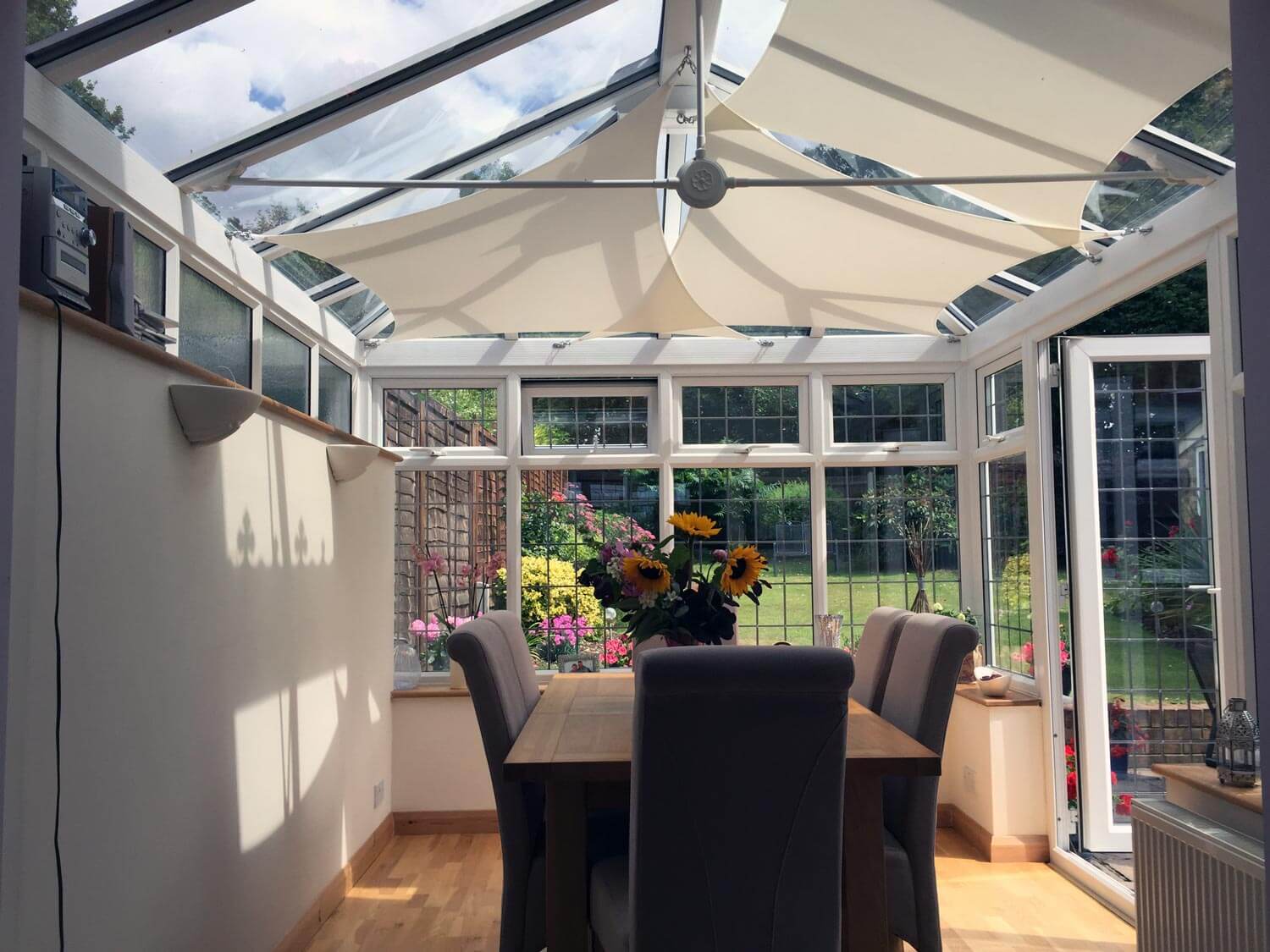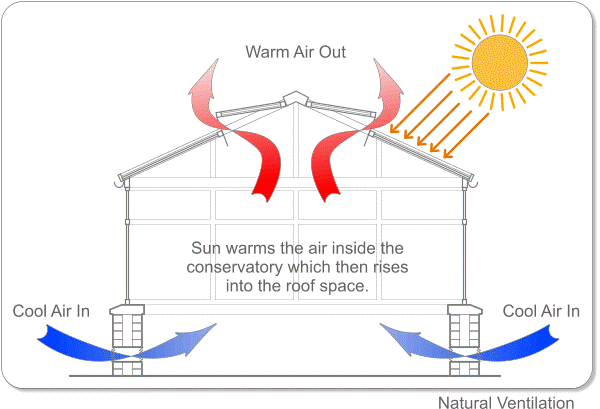Is Your Conservatory Too Hot To Enjoy?

Daft question really, why else are you looking at this site! But you may not realise how extreme the temperatures get. Up at the top of the roof the temperature can exceed 70 degrees centigrade which is hotter than the surface temperature of the hottest desert on the planet. You could literally fry an egg up there if you can find a way to hold your frying pan. Read more to find out why and what you can do about it…
Three steps to cooling your conservatory…
Step 1. Providing Shade
The first step is the introduction of shade within your roof space. Shade removes the direct effect of the heat of the sun and will significantly increase your comfort level on hot sunny days. The temperature in the shade on sunny days can be 10-15 degrees centigrade cooler, making you feel more comfortable and reducing the requirement for additional cooling. A good aim is to block most of the heat while maximising diffused light transmission to maintain natural light levels.
When looking at options for shade the transmission value will tell you how much light will come through, typical values for the fabrics used in blinds and shade sails are in the 5-10% range. Under full sun our ISX fabric has a light transmission value of up to 21% together with full diffusion (value depends on colour as darker colours absorb visible light.
Step 2. Reducing Heat Gain
Reducing the amount of the suns energy entering your conservatory will reduce the ambient air temperature and when used together with ventilation will allow you to maintain comfortable temperatures throughout the summer. Solar control can be introduced by either reducing the light before it before it comes through the roof or reflecting it back out again before it heats the space. Blocking the light before it enters your conservatory, using an awning is more efficient but is often less practical and usually more expensive.
The reflectance value tells you how much heat the solar control fabric, film or coating will reflect; the higher the value the better, the maximum value is around 80% (the average value for new snow and the maximum for white clouds) values above 60% are good. You should also look at the thermal absorption value as this indicates how much heat the glass or fabric will absorb and then potentially radiate into the room; the lower the value the better, values below 10% are good.
Your aim is to reduce the heat gain levels below the capacity to remove heat through ventilation. This way you can control the temperature by adjusting the flow rate of your ventilation; which is much easier to achieve. Most of the heat on hot sunny days will enter through the roof and frequently through just parts of the roof, so these are the areas to focus on first. You can calculate the heat load reduction by simple calculation.
80% of area x a Solar reflectance 72% = an average reduction of 57%
If you have good ventilation then providing good solar control over just part of the roof can be very effective.
Step 3. Improving Ventilation
The final step is to maximise and control your ventilation. Ventilation can be natural or driven by a fan. In both cases you will want to expel hot air at a high level and draw in cooler air at a lower level.
Heat is best expelled at the highest point as this is where the hottest air will naturally be. This hot air can be removed by a roof light or ridge vent. These can be simple openings or can be mechanically assisted to increase the natural flow.
To replace the hot air you want to draw in air from the coolest location possible, which is usually close the ground, your house wall and wherever possible from a shaded location.
Adding a low level air vent can be a simple way to increase air flow but make sure that as a minimum you can close it in winter.
If you only have window vents in the walls you will need to create cross flow by opening at least one window on opposite sides of the conservatory. Try to open windows at different heights, as far apart as possible or in the direction of a natural breeze.
